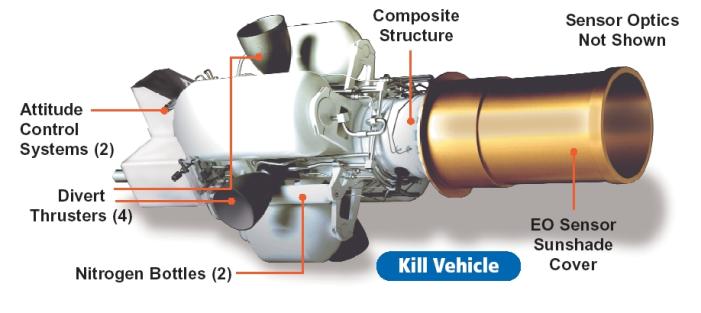- Joined
- Oct 24, 2010
- Messages
- 2,093
- Likes
- 1,112
'Enemy' ballistic missile to be downed in space next month
The incoming missile fired earlier from an Indian Navy warship in the Bay of Bengal
New Delhi Dec 02, 2012, 16:54 IST
Next month, the Defence R&D Organisation (DRDO) will attempt to shoot down an incoming "enemy" ballistic missile in outer space, well before it enters the earth's atmosphere. The DRDO chief, Dr VK Saraswat, has told Business Standard that a newly developed Prithvi Defence Vehicle (PDV) interceptor missile will be launched from Wheeler's Island, travelling 110-150 kilometres into space, where it will destroy an incoming missile fired earlier from an Indian Navy warship in the Bay of Bengal.
This comes on the heels of the DRDO's successful Nov 23 test of its Advanced Air Defence (AAD) interceptor missile, which destroyed an incoming target missile at an altitude of 15 kilometres. Together, the AAD and the PDV missiles, along with their radars and control centres, will form a two-layered anti-ballistic missile (ABM) defence system that will protect strategic targets like Delhi by 2013-14. While the AAD missile performs endo-atmospheric (inside-the-atmosphere) interceptions of enemy ballistic missiles; the PDV will conduct exo-atmospheric (outside-the-atmosphere) interceptions.
Next month's test will feature a brand new target: a two-stage version of the Dhanush missile, launched from a naval vessel that is 300-350 kilometres from the interceptor location at Wheeler's Island off the coast of Odisha, and soaring to an altitude of over 150 kilometres. This target missile would mimic the trajectory and speed of an enemy ballistic missile fired from 1500 kilometres away, such as Pakistan's Gauri and Shaheen missiles. So far target missiles, fired from Chandipur just 70 kilometres away, could only mimic enemy missiles fired from a range of 600 kilometres or less.
"Firing range limitations make developing targets as much a challenge for us as developing interceptors. We have developed a boosted, two-stage version of the ship-launched Dhanush missile --- which makes it into quite another system --- taking it to a greater altitude that will mimic the actual terminal conditions of a 1500-kilometre class enemy missile," explains the DRDO chief.
The brand new PDV will intercept the incoming target at about 110-150 kilometres altitude, far higher than the 50 kilometre-high interceptions that the exo-atmospheric PAD (Prithvi Air Defence) interceptor has been doing so far. The PDV will carry a new Indian electro-optic seeker, which will work in tandem with the radio frequency seeker that the PAD has traditionally carried. An electro-optic seeker provides greater accuracy and reliability than a radio frequency seeker in homing the interceptor onto the target.
The PDV will be a solid-fuel missile that will be powered by a sophisticated new "pulse motor". This will provide surges of propulsion during the missile's later stage, increasing its manoeuvrability when it is very close to the target.
"Intercepting the target at longer ranges provides several advantages. Firstly, the target is travelling slower --- some 2 kilometres per second at 150 kilometres; compared to 2½ kilometres per second at 50 kilometres altitude. Secondly, the target missile can be engaged before it enters Indian airspace, so that the debris falls into enemy territory. Finally, a longer flight time gives the interceptor more time for navigation, and the seeker can see better.
The PAD has been test-fired only twice, compared to the four test-firings of the AAD. DRDO insiders say that, with the PDV under development, there was no incentive to waste effort on the PAD. Now the PDV could well undergo a phase of intensive testing.
Alongside the actual launch of the PDV at an actual target missile, the test next month will also feature up to 6 simulated targets that will force the radars and command systems to respond. "We can launch six interceptors simultaneously --- some endo-atmospheric and some exo-atmospheric --- to handle such an attack," says Saraswat.
The DRDO is meanwhile working on Phase Two of the anti-ballistic missile defence programme, which is capable of downing enemy inter-continental ballistic missiles fired from upto 5000 km away. The DRDO says the Phase Two shield would be deployed by 2016.
'Enemy' ballistic missile to be downed in space next month


 An electro-optic seeker provides greater accuracy and reliability than a radio frequency seeker in homing the interceptor onto the target.
An electro-optic seeker provides greater accuracy and reliability than a radio frequency seeker in homing the interceptor onto the target. Finally, a longer flight time gives the interceptor more time for navigation, and the seeker can see better.
Finally, a longer flight time gives the interceptor more time for navigation, and the seeker can see better.










 you never heard it from me
you never heard it from me 